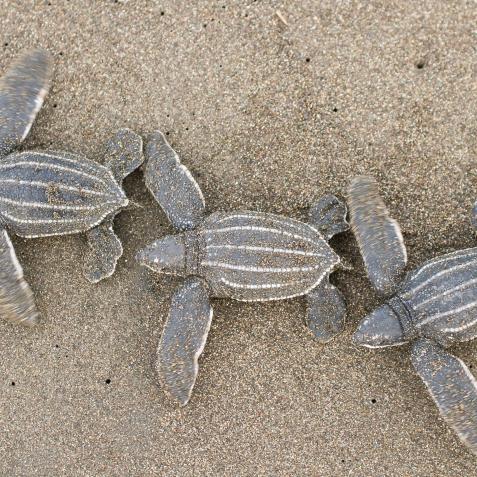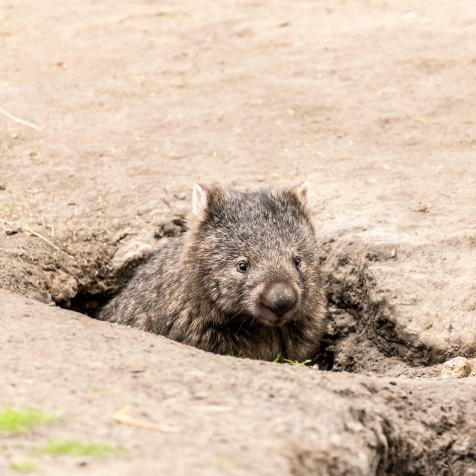
Sylvain CORDIER
Saving the World’s Gibbons Monkeys
Gibbon monkeys, who live in the evergreen tropical rainforests of Southeast Asia, are the most endangered primate species in the world.
They eat mainly fruit and have adapted to living high above the ground in the treetops, in small family groups. There are 19 species, the largest group among apes, and several species are threatened by imminent extinction in the very near future.
They’re highly acrobatic, swinging through trees as if they’re flying, but they’re also able to walk on two legs, which they do along branches and the ground. Highly unusual for mammals, they also sing—early in the morning, they produce spectacular songs that can be heard up to 2km away with mated pairs singing in duets.
But, due to habitat loss and degradation, along with hunting and an illegal trade, their survival is under grave threat. Preservation of the tropical forest is imperative. In China, 99% of the gibbons’ natural environment has been lost. The illegal pet trade is thriving across Southeast Asia. Young gibbons are popular pets, but in order to obtain a young animal, its mother must be shot down from the tree tops. Sadly, often both mother and infant perish in the process.

Sylvain CORDIER
There is very little information on how many gibbons are left in the wild. As of 2017, there are just 25 left of the Hainan species, and there are few figures for the other 18 species.
But two non-profits are working hard to preserve their future.
One is the Gibbon Conservation Alliance and the other, the Wildlife Alliance. In 2017, they partnered on a year-long project launched to release a pair of pileated gibbons back into the wild—the UNESCO World Heritage Site Angkor Protected Forest in Cambodia.
Cambodia is the world’s stronghold for this gibbons’ species, which have been in decline for the past few decades due to hunting and destruction of their habitat. In 2006, they were deemed to be locally extinct in the Angkor forest. The non-profit’s previous success stories include the birth of a baby in October 2014 from two captive-bred gibbons—they were released into the wild after seven months in the organization’s training program. Another pair, one of whom had been captive-bred and the other captured by illegal traders in the wild, was released in 2015.

Arterra
In 2017, both alliances procured a pair of gibbons from the Phnom Tamao Wildlife Rescue Center in Phnom Penh, Cambodia, and put into the rehabilitation enclosures that are closed to the public to prevent human contact. The enclosures are one hectare-forested areas that help gibbons get used to the wild. After spending six months in the area, the gibbons and their new baby daughter were freed into the forest via a release door in the top of the enclosure. They were provided with supplementary food until they had learned to forage for themselves and monitored.
“There is no end date for this project, and it will continue to be managed for years to come,” a spokesperson for the Wild Alliance said. “The release or birth of young is essential to ensure a sustainable breeding population of gibbons. In March 2017, we were proud to announce the birth of a second baby to the original pair, released in December 2013, which was another triumph for this project. Their first daughter, who was born in October 2014, is very protective and the family is doing well. This brings the total of three infants born to released gibbons.”
Despite strong anti-trafficking laws, illegal wildlife trades still operate, and gibbons are regularly rescued from hunting and pet trades. Most are hand-raised and so they are unafraid of people. The difficulty of releasing gibbons previously kept as pets was highlighted in one case at the rescue center.
A pileated infant gibbon called Storm was brought to the center by her owner after the pet fell ill. After learning keeping Storm as a pet is illegal, the owner surrounded the primate to the center’s staff. However, Storm will never be able to be released into the wild because she exhibits human behaviors. She’s learned to wave her fists in front of her eyes – a human symbol for crying – holds eye contact, and smiles. The latter two behaviors would be interpreted as aggressive in gibbon society, and she would likely be attacked, or at worst, killed.
Not only are pileated gibbons kept as pets across Asia, they are hunted as bushmeat too. In Thailand, they are being poached in Thap Lan National Park by illegal rosewood loggers who hunt and them while they are felling trees.
It is a long process, some gibbons can take almost 10 years before they are ready to be released into the wild. However, the Gibbons Conservation Alliance continues to aim to promote gibbon conservation and research, as well as increasing public awareness of the gibbons’ plight and the urgent need for protection measures.


















